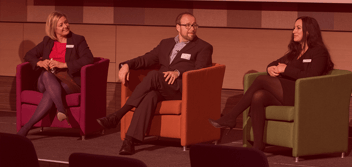Artificial intelligence: what to really expect in your lifetime
We keep hearing about how technology is accelerating and that artificial intelligence (AI) is starting to change the world. But what does this really mean for you and me during our lifetime? I look around and still see humans fumbling around trying to get the printer to work, so what gives?
A reliable person to ask is Ray Kurzweil, an author, scientist and futurologist that has a string of honorary doctorates, plus several awards from US presidents. Bill Gates calls Ray, "the best person I know at predicting the future of artificial intelligence." Ray is the guy tagged by Larry Page to direct artificial intelligence development at Google.
In short, Ray is very smart. And his predictions across the technology landscape are truly mind blowing.
Technology predictions Ray got right
Anyone can throw a load of predictions at the wall and hope some stick, but Ray’s published predictions have proved to be 87 per cent accurate over the past thirty years. In 1990, when the Internet was still largely unknown, he made bold forecasts:
- That a computer would defeat a world chess champion by 1998. In 1997 IBM’s Deep Blue defeated Garry Kasparov.
- That PCs would be capable of answering queries by accessing information wirelessly via the Internet by 2010. Yup, he got that right.
- By 2009 computer displays could be built into eyeglasses for augmented reality. With Google Glass, Microsoft HoloLens and a plethora of other tools, the technology arrived and is just now starting to seep into our world.
There are many more examples that underline the strength of Ray’s track record, but allow me to shift gears.
Predictions for the next 30 years
So let’s dig into what Ray expects next. And this is where things get weird because Ray’s predictions suggest that the impact will change what it means to be human. Seriously.
Before we conclude this decade, ten terabytes of computer power – approximately the same as the human brain – will cost about £1000. And with cloud computing democratising technology, soon everyone will have access to unprecedented amounts of computing power.
There’s no voodoo at play here. Ray’s predictions are a by-product of his understanding of Moore’s Law that predicts computing power will double every two years, intersecting with Ray’s own Law of Accelerating Returns, where we see progress plotted on a graph like a hockey stick.
2020-2030: As we enter the next decade self-driving cars will begin to take over the roads, and shortly after humans won’t be considered safe enough to drive without AI assistance (at least without incurring premium insurance policies).
Agriculture and production will be mostly automated.
By 2029 a personal computer will now be a thousand times more powerful than the human brain and capable of autonomously learning and creating new knowledge. Ray expects that a machine will pass the Turing test - the ability for technology to exhibit intelligent behaviour indistinguishable from that of a human.
We can expect blood-cell sized devices known as nanobots to become smarter than current medical technology and more effective at fighting disease than biological solutions. Within 25 years we can expect millions of these nanobots inside our bodies fighting diseases, improving our memory and cognitive abilities. Consequently we’ll see a shift in life expectancy.
2030-2040: Nanotech will be able to control brain signals. Virtual reality begins to feel completely real, making physical workspaces obsolete. Tech can begin recording people’s experiences and replay them in our head. People can begin to control and change their own memories and personalities.
During this decade we will be able to upload our mind/consciousness to a computer, opening up the possibility of our software-based immortality.
2040-2050: As we near the middle of the century AI now surpasses human beings as the smartest and most capable life forms on the planet. Nonbiological intelligence will now be billions of times more capable than biological intelligence.
By 2045 the pace of change will be so astonishingly quick that we won’t be able to keep up, unless we enhance our own intelligence by merging with the intelligent machines we’re creating. In essence, humans will be a hybrid of biological and non-biological intelligence that becomes increasingly dominated by its non-biological component.
Nanotech ‘foglets’ will be able to make food out of thin air, and create any object in the physical world at a whim.
Our perspective is distorted
Humans tend to think linearly, which is what makes Ray’s predictions so strange. Digital technology growth works exponentially which is what makes it so disruptive, especially now it’s encroaching the physical world.
Internet technology, AI, mobile phones, translation software and voice control have all disrupted massive companies. Each time they’ve dematerialised, demonetised and democratised access to services and products that used to be linear and non-scalable.
When I consider Ray’s predictions and think about Microsoft’s 2016 survey that suggested many UK business leaders expect their business model to be broken within five years, it starts to make sense. Technology now dominates our society. Silicon Valley is where the power lies, less so government.
When you hear about the possibility of ‘moving to the Cloud’, this isn’t about simply moving your data from a dusty server in an office, to some data centre elsewhere. This is about gaining access to huge economies of scale that allow your business to build on the shoulders of giants.
While the possibility of Ray’s predictions may very well come true, how we as humans respond to it is something else. As part of Nash Squared, Crimson publishes the annual Digital Leadership Report. You can download a your copy here to see guide your teams in thinking about where your organisation can go next.


